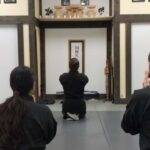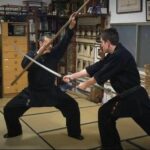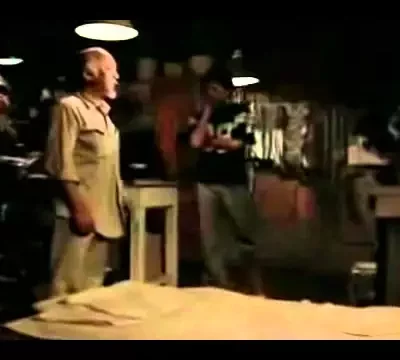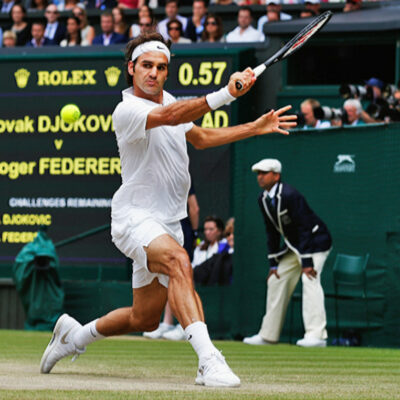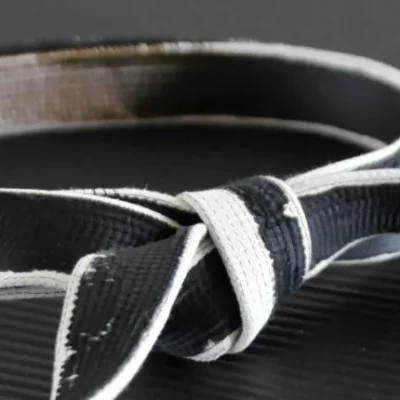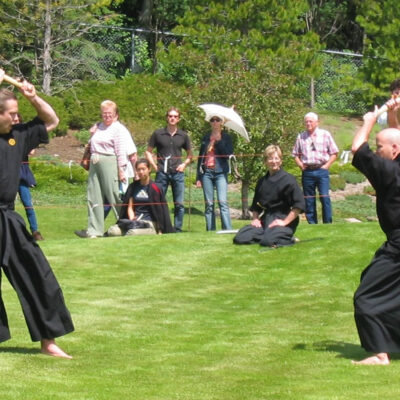Studying Koryu (lit. “Old School”) arts are more about gaining trust of the teacher rather than developing skill per se. Most of what is in a Koryu art is kept secret from the majority of practitioners, with the most sensitive or secretive information reserved the most dedicated and trusted students.
Martial Arts traditionally are kept secret for a number of reasons.
First and foremost is to create asymmetrical warfare. For a side to win they have to have an advantage over the enemy. One such advantage is that of surprise; if you don’t understand the opponent it can be difficult to anticipate how they will react. This is concept is eloquently explained in the ultimate treatise on warfare, The Art of War by Sun Tzu where he shares this Chinese proverb:
“If you know the enemy and know yourself, you need not fear the result of a hundred battles. If you know yourself but not the enemy, for every victory gained you will also suffer a defeat. If you know neither the enemy nor yourself, you will succumb in every battle.”
Sun Tzu quoting Chinese Proverb
Thus keeping your techniques, tactics, and strategies secret from the enemy is essential to victory. Therefore, martial arts tended to be kept very secretive.
The second reason is to protect the Head Teacher, sometimes referred to as “Soke”. There’s nothing to prevent a student from using the art to create their own. A brash student would assume that they would have enough of the “secrets” of the art to create their own that would compete directly with the school. However, they likely would be creating the art on an incomplete picture and/or incorrect assumptions.
It’s similar in business to keeping a product’s formula secret to prevent competitors from copying their product. In this example, the product is the training and the formula is the innermost guarded secrets of the art.
But how did people learn these arts then? By gaining trust.
For example, there are techniques that we study that can cause great bodily injury if executed on someone. I would never teach those to someone just starting, since there’s too much risk that they will go out and try it and either: A. Kill someone B. Get themselves killed.
So within the techniques some information is withheld. As a student continues to train and demonstrates they aren’t a threat to the school (or the general public), they gain access to additional information. Often these “secrets” make the technique simpler and/or more effective.
This is the typical ranking system of Koryu arts:
- Shoden Menkyo (Beginner Transmission License): Student has sufficient knowledge in the basics of the art.
- Chuden Menkyo (Intermediate Transmission License): Student has obtained intermediate knowledge.
- Okuden Menkyo (Inner Transmission License): Student has gained advanced knowledge/insights into the art
- Hiden Menkyo (Secret Transmission): Student has been given secretive/sensitive information of the art.
- Menkyo Kaiden (License Full Transmission): Student has received complete transmission of the art. This is the highest level. Student would be theoritically eligible to become next Head Master. This is usually kept relatively secret, and sometimes Menkyo Kaiden holders will develop their own arts.
How could you betray that trust? Simply by sharing this information outside of the art.
The most common way this happens is when a student (prematurely) creates their own art. After training for a while, they decide they have sufficient knowledge to create their own system. However, this typically is based on incomplete information, as they haven’t had enough experience nor permission from the Soke of the art to do so.
Usually this results in either being cut-off from the art (Hamon) or simply limiting how much information the student will obtain – effectively hiding the rest of the art from them.
I have seen this first hand in Japan; students that either offend a teacher, or simply are not yet trusted, are taught an incomplete version of the technique. The only way to recognize this is if you have had sufficient training with the teacher to see certain things that are being omitted or shown differently.
Thus if the student either betrays the teacher or the art, they do so with incomplete information and are completely unaware of it. The only way to become aware is to continue training, and gain the teacher’s trust.
This doesn’t mean that what the student originally is taught is ineffective – only less effective than the highest levels.
This is built into how the art is transcribed; most information in the scrolls is very vague. Only the general movements are transcribed. This is to prevent someone stealing the scrolls and claiming they have been properly trained or – worse – using it against practitioners of the art.
This means much of the key information is either transmitted orally, or his kept separate in the personal notes of the teacher.
This is part of the reason why Soke Hatsumi says you can’t learn from videos or books; what is being shown in the videos is incomplete. At best, you can get cursory knowledge of the art, but nothing more.
While video and books can be a helpful resource, they cannot replace training with a qualified teacher that has invested large amounts of time and money into their own training and developing a relationship with their teacher.
There are many practitioners that create their own art after only achieving a low level black belt in a handful of arts (or worse just one). For example, there are many teachers that claim to have their own system of NInjutsu. However looking at their experience, many only have Shodan, Nidan or Sandan (1st, 2nd, or 3rd Degree Black Belt) in our art.
To put that into perspective, you have to be a minimum Godan (5th Degree) to be authorized to just teach the art. At the time of writing this, I’m an 8th Dan and still am only scratching the surface.
No matter how good you are, how much information you think you have, at Shodan – or even Yondan – you are not qualified to develop your own art. You’re not even qualified to teach.
The two most notable modern Japanese arts that stem from Koryu are Judo and Aikido.
Jigoro Kano developed Judo based primarily on Kitō-ryū and Tenjin Shin’yō-ryū after gaining a very high level of proficiency in the art, and with the support of his teacher. Many of the ways techniques are taught stay true to the ways they are taught in the main lines of those arts.
Morihei had already had a lot of experience in various arts as well as menkyo of transmission before studying Daito Ryu Aikijutsu – which would form the foundation of Aikido. He was teaching Daito Ryu when he began evolving his methods to align more closely with his spiritual beliefs (i.e. not hurting/killing your opponent).
Hatsumi and the Bujinkan mirror the development of Aikido and Judo. Hatsumi already was very accomplished in several arts before studying under Takamatsu Toshitsugu. After 15 years he was given Sokeship. He continued to refine his technique for decades based on first hand experience with Takamatsu and the very detailed notes Takamatsu provided. The arts themselves were somewhat related, and eventually unifying principles became apparent that eventually evolved into his Budo Taijutsu system. In reality this forms only a base for studying the Koryu lines.
However, the lines are still maintained individually keeping true to their Koryu roots. Thus a student can obtain fairly high rank in Bujinkan Budo Taijutsu, but not necessarily have Menkyo Kaiden in any particular art. And very few foreigners every achieve such a high level.
To achieve the highest level of a Koryu art often takes several decades if not a lifetime. Not only does it take high levels of skill and dedication, but also a high degree of trust from a teacher. Studying Koryu requires navigating a high level of ambiguity spread across years of training that protects both the student and teacher.
To assume to be able to develop your own system without this level investment is a demonstration in hubris.
It’s also the duty of the teacher to only share the most sensitive information of the art with those that have demonstrated the trustworthiness to be given such information. Otherwise, the student, the teacher and even the art are put into jeopardy.
It’s important to stay aware of this when looking to study a Koryu art – and even more so when teaching it. Remember: not everything is always as it seems.

